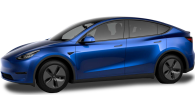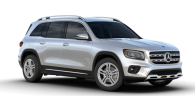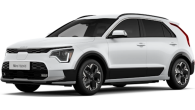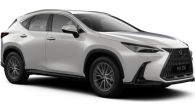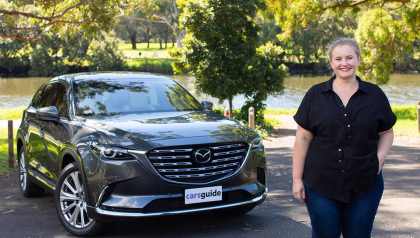The 2023 Hyundai Palisade is for people that think big. And if you’re in the market for an SUV of this scale you’ll have some big questions.
Will it fit my big family and all the big stuff that goes with it? How big will the fuel bills be?
How big is the price tag? And is it set up to handle a big Aussie road trip, a big trek to weekend sport, or a big push on to the supermarket afterwards?
Stick with us because we’re about to answer all those questions, and more. It’s going to be big!
Hyundai Palisade 2023: Elite (8 Seat)
| Engine Type | Diesel Turbo 4, 2.2L |
|---|---|
| Fuel Type | Diesel |
| Fuel Efficiency | 7.3L/100km (combined) |
| Seating | 8 |
| Price From | $60,610 - $69,630 |
| Safety Rating |
|
Does it represent good value for the price? What features does it come with?
8 / 10
This three-row, up to eight-seat SUV flagship boasts a refreshed exterior and interior design, new tech and improved safety, with the previous entry-grade model deleted and prices starting from just under $66K, before on-road costs.
There are now two variants only, but as per the out-going model, two engine choices. We’ll get to the details of each shortly, but for now, petrol means front-wheel drive, and diesel means all-wheel drive.
The Elite grade kicks things off at $65,900 for the petrol 2WD and $69,900 for the diesel AWD. It retains features like 12-speaker Infinity audio, active cruise, leather-appointed seats, dual-zone climate, a 10-way power-adjustable driver’s seat, heated front seats, LED headlights, DRLs, tail-lights and fog lights, and a power tailgate.
Headline additions are a 12.3-inch digital instrument cluster, 12.3-inch HD multimedia screen, a glass sunroof, remote start and Bluelink connected services.
Bluelink is a first for Hyundai in Australia, and features things like a valet mode, back-to-base collision notification, an SOS function, voice control, weather advice and more.
.jpg)
Step up to the Highlander ($75,900 petrol 2WD / $79,900 diesel AWD) and things like Nappa leather-appointed seats, ventilated first and second row seats, rain-sensing wipers, and an eight-way power-adjustable front passenger’s seat will be familiar to current owners.
Additions in this refresh include a 3D surround view function, remote smart, wing type headrests on the outer positions on the second row, and a digital interior mirror.
.jpg)
For eight-seat SUV capacity you’re looking at heavyweight competitors like the Toyota LandCruiser 300 and Nissan Patrol, which the Palisade undercuts by a significant margin, without giving too much away in terms of equipment. So, fair play on value-for-money there.
But more direct competitors are the Toyota Kluger and Mazda CX-9, as well as Nissan’s new Pathfinder, arriving late in 2022, kicking off from around $54K, with a petrol V6, two- and all-wheel drive, and offering eight seats in all grades.
Is there anything interesting about its design?
8 / 10
It feels like the Palisade’s only been around for five minutes, but closing in on two years is the reality, and it’s been on-sale elsewhere since 2018, so a design refresh is timely.
This is a big canvas to work with, and you’d never guess the US is a prime market for this model.
Up front, the already sizable grille is squarer and even more imposing, while the LED headlights are vertically-stacked down each side, and the indicators are hidden behind shaded geometric pieces extending out from the top of the grille.
.jpg)
For car spotters, the Palisade Elite’s grille is tinted predominantly black, while the Highlander’s has bright accents.
The 20-inch alloy wheels are the same size but new design on both grades, and the Highlander features satin chrome door handles and rocker sill panels.
At the back the full-width high-mount stop light is upgraded to LED, the tail-lights are revised, and the exhaust outlets have been squared off.
.jpg)
Things have changed inside, too. The centre air vent is more neatly integrated, the new-look steering wheel has four spokes, plus there’s a 12.3-inch HD multimedia screen, and 12.3-inch digital instrument display on both models.
There’s also an adjustable centre armrest, the indicator stalks have been massaged into a more geometric shape, and overall there’s a nice blend of screen functionality and physical controls.
The look is distinctively assertive outside and that little bit sleeker inside.
.jpg)

How practical is the space inside?
9 / 10
Does large scale automatically deliver big practicality? Well, in this case the answer is yes. Big doors and heaps of interior space combine with thoughtful storage options, to deliver family-friendly practicality.
There’s hectares of room in the front as well as two lidded bins, one large one between the seats, the top of which doubles as a centre armrest, and a smaller box in the centre console, containing two expandable cupholders. The console is also a two tier arrangement with an awkward to reach into but still handy oddments tray on the lower level.
The glove box is a decent size, as are the door pockets, complete with a sculpted area for large bottles.
.jpg)
Move to the centre row and you’ll slide into one of two ‘captains chairs’ in the seven-seat configuration, complete with adjustable ‘wing’-type headrests on the Highlander, familiar to any seasoned air traveller. It’s a three-position bench in the eight-seater.
If space is luxury, middle seaters in the Palisade cop a five-star experience. There’s ample head, leg and shoulder room, with enough space for three child seats or baby capsules across in the eight seat set-up.
An ability to slide the centre seats fore and aft should quell any turf wars between second and third row occupants (although the backrest recline function could heat this up again), pull-up window shades are a plus, and there’s adjustable ventilation control as part of the three-zone climate system.
.jpg)
Storage includes a large and small cupholder in each door, as well as a bottle holder underneath, map pockets on the front seats backs (with smartphone-sized pouches built-in), and another pair of cupholders on the centre armrest on eight-seat versions.
Tilt and slide the second-row seat via a one-touch ‘Walk-in’ function, and you have low-stress access to three third-row positions.
Legroom is okay for me at 183cm (with the middle row in a reasonable position), and headroom is fine. When it comes to width, adults will need to be on good terms to share the space on what would hopefully be a short trip. But up to mid-teens won’t have a problem, especially as these seats recline, too.
.jpg)
You’re even looked after with ventilation (in the roof), dual cupholders either side and USB power outlets.
Speaking of which, there’s a pair of Type-C USB outlets for power in each row (total six) with a single USB-A port in the front for media connection. Add two 12V sockets in the front, plus another in the second row and devices won’t be going short on charge.
.jpg)
And how’s this for a party trick? Hyundai has created a media cable tunnel between the top and lower tiers of the front centre console, to keep unwieldy cables under control. Plus, the wireless device charging pad has been upgraded to 15-watts for quicker turnaround.
Also worth noting a ‘Quiet Mode’ function limits audio volume in the first row and mutes it in the second two. Nice for parents with sleeping kids (or those with the Airpods in) in the back, who would still like some musical company up front.
With all three rows upright, boot space is 311 litres (VDA), which is enough to be useful for day trips when you have a full house on-board. Fold the third row and that grows to 704 litres, and with the second and third rows down you’re at 2447 litres, and that’s plenty.
There are tie-down anchors and bag hooks galore, the loading height is manageable (there’s only a modest lip to deal with), a hands-free, speed- and height-adjustable power tailgate is standard on both grades, and there’s a full-size alloy spare on-board.
What are the key stats for the engine and transmission?
7 / 10
Engine choice is unchanged with a 3.8-litre naturally aspirated petrol V6 in front-wheel drive variants, and a 2.2-litre turbo-diesel four powering all-wheel drive models. Both are matched with an eight-speed automatic transmission.
The ‘Lambda II’ petrol V6 is an all-alloy unit, featuring direct-injection, and variable valve timing on the inlet and exhaust side (D-CVVT) to produce 217kW at 6000rpm and 355Nm at 5200rpm.
.jpg)
The ‘R series’ diesel four features an iron block and alloy head, a single turbo and direct-injection to deliver 147kW at 3800rpm and 440Nm from 1750-2750rpm.
Tweaks to the eight-speed auto transmission include a new carrier for the rear gear set, low-friction sealing at key points, a revised input shaft, an updated selection actuator, lower viscosity oil, and a dual-chamber design torque converter on diesel models.
How much fuel does it consume?
6 / 10
Hyundai’s official fuel economy figure for the Palisade FWD petrol on the combined cycle is 10.7L/100km, the V6 emitting 251g/km of CO2 in the process. The equivalent numbers are 7.3L/100km and 193g/km for the AWD 2.2-litre turbo-petrol four.
Nothing to set the world on fire, but it’s worth remembering this is a properly big, roughly two tonne, three-row SUV. That said, although the launch drive included a small amount of city and suburban traffic, freeway running was over-represented, so we’ll wait for a full road-test to capture real-world figures.
The tank holds 71 litres on both versions, which using the quoted consumption number, translates to a range of around 660km for the petrol and 970km for the diesel.
Warranty & Safety Rating
What safety equipment is fitted? What safety rating?
9 / 10
Safety’s a tough subject when it comes to the Palisade. After more than 18 months on sale here the superceded model has only just been assessed by ANCAP, and mainly because it scored less than 80 per cent in the adult occupant protections test, and a less than 70 per cent safety assist examination, it was handed a four- out of five-star rating.
But additional active and passive safety tech, including ‘Multi-anti-Collision Brake’ which reduces the risk of additional impacts after a crash, rear brake assist, and inclusion of a front centre airbag has redressed the balance, and this car scores five stars against 2022 ANCAP criteria. The floor and side structure have also been reinforced.
.jpg)
Standard crash-avoidance tech also includes, blind-spot monitoring and ‘Collision Avoidance Assist’, driver attention monitoring, AEB (up to highway speed with car, pedestrian and cyclist detection, and ‘Junction Turning’ function), ‘High Beam Assist’, ‘Speed Limit Assist’, lane following and lane keeping assist, rear cross-traffic alert, adaptive cruise, and tyre pressure monitoring. There’s more, but you get the idea.
If a crash is unavoidable, as well as the new front centre airbag, there are front and side bags in the first row, as well as side curtains covering all three rows.
For securing child seats or baby capsules, there are two or three top tethers in the second row (depending on seven-or eight-seat configuration) and another two in the outer positions of the third row. There are two ISOFIX mounts in the second row, and one in the back.
What does it cost to own? What warranty is offered?
8 / 10
Hyundai covers the Palisade with a five-year/unlimited km warranty, which is standard in the mainstream market now.
12 months roadside assistance is provided, which is renewed for another year every time you service your vehicle at an authorised Hyundai dealer - up to a maximum 10 years.
Service is recommended every 12 months or 15,000km, and pre-paid capped price servicing is available across various agreed time and distance combinations.
What's it like to drive?
8 / 10
Not surprisingly, the drive characteristics of petrol and diesel Palisade models differ. The naturally aspirated petrol V6 lacks the low-down punch of a turbo with maximum torque (355Nm) arriving at 5200rpm. But it’s still strong in the mid-range, and the upside is ultra-smooth and linear power delivery, the peak (217kW) arriving way up at 6000rpm.
As mentioned earlier, choosing petrol automatically means front-wheel drive, which can result in a tendency towards understeer in tighter corners. But over a mix of city, freeway and B-road driving on the launch program there wasn’t a hint of push on the front axle.
Swap to the turbo-diesel four and additional thrust (440Nm) immediately makes its presence felt, but we’re not talking sports car acceleration here.
It might pull hard initially but the diesel Palisade runs out of puff at higher revs, with peak power (147kW) hitting at 3800rpm, and you can expect it to accelerate from 0-100km/h in around 10 seconds. The free-revving (and circa 90kg lighter) petrol Palisade will hit the same mark in roughly eight seconds.
_0.jpg)
The AWD diesel brings extra security on loose or slippery surfaces like the track to your favourite camping spot, a cheeky trip to the snow, or negotiating the local boat ramp.
Speaking of which, braked trailer towing capacity for petrol and diesel versions is 2.2 tonnes, which means a big dual-axle caravan is off the agenda, although a single axle camper-trailer or hitching up the tinnie will be fine. A trailer pre-wiring package is standard.
For the more adventurous types the approach, departure and break-over angles are 18.5, 20.3, and 17.9 degrees respectively.
.jpg)
The upgraded eight-speed auto transmission is smooth with both models featuring wheel-mounted shift paddles for when you want to take control.
What was that about the Palisade being big? At just under 5.0m long it’s a sizeable machine and suspension is strut front / multi-link rear, with new selective dampers and revised spring rates on both models.
The tricky dampers feature an additional sliding valve (below the main fixed valve) to better control frequency, and it’s worth noting that unlike other recent Hyundai models where the suspension has been tuned locally, the Palisade’s final ‘global’ suspension configuration was finalised at Hyundai’s Namyang R&D centre in South Korea.
.jpg)
There was Aussie input along the way, though, and on the basis of this first drive the overall result is a positive one.
Ride quality, even over coarse and pock-marked backroads and riding on 20-inch rims, is good, with minimal engine and wind noise intruding thanks in part to more sound insulation, thicker rear door glass, better body sealing and revised drivetrain mountings to minimise vibration.
With revised bearing, the electric power steering is nicely weighted and pleasingly progressive. Not a stand-out in terms of road feel, but not tragic, either.
.jpg)
You can feel the weight of the car, though it remains predictable and stable in corners, be it a FWD petrol or AWD diesel.
Braking is by big ventilated discs all around (340mm fr / 314mm rr), which is nice to know when towing comes into the picture. The pedal is nice and progressive and stopping power is strong.
Parking is surprisingly straight-forward given the size of this truckster and three rows of seats, with the Highlander’s 3D surround view function and digital interior mirror welcome.
.jpg)
The latter frees up rear vision when headrest, passengers or big loads get in the way, but I know I’m not alone in finding these camera-based systems disconcerting initially because of their limited depth-of-field.
The front seats remain comfortable in the face of long stints behind the wheel, although the rear seats feel relatively flat and firm.
In terms of ergonomics, the blend of screen-based and physical controls is spot-on.
Verdict
This upgraded Palisade has the refinement, practicality, and value to stand up as a quality option for those seeking big family accommodation. It’s nicely put together, safety’s top-shelf, and it certainly stands out from the crowd.
A hybrid powertrain would be nice, because the V6 particularly, likes a drink. But given the new Sante Fe will offer hybrid power later this year, maybe that’ll come in time.
Note: CarsGuide attended this event as a guest of the manufacturer, with accommodation and meals provided.
Pricing Guides







.jpg)
.jpg)
.jpg)
.jpg)
.jpg)
.jpg)
.jpg)
.jpg)
.jpg)
.jpg)


.jpg)
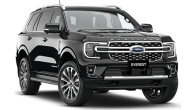

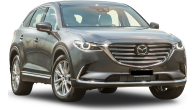


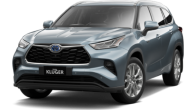
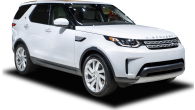


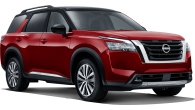





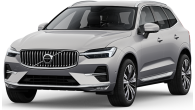






.png)
